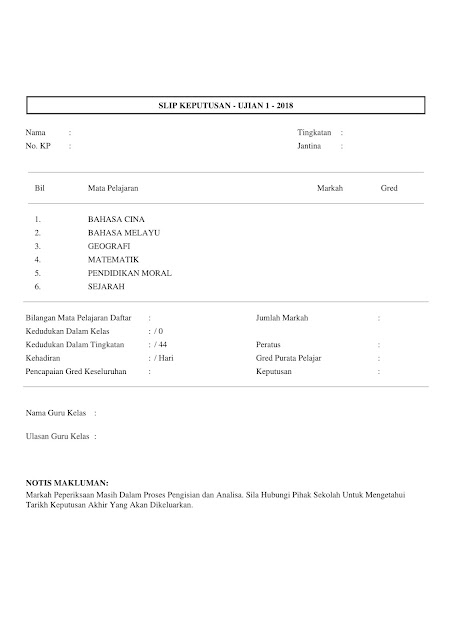
One of the things parents frequently face when coaching young kids is the fact that they frequently make mistakes during tests. How do you avoid these mistakes? One of the ways is to know what are the common mistakes kids often make.
Write up a checklist and go through this checklist with them each time before a test. Keep on reminding them and they will get it eventually. You may feel like pulling your hair out when they do repeat these mistakes even after your repeat reminders but there's no need to pull out your hair. Go and de stress by listening to music or getting some exercise instead. They will get it eventually.
Here's a checklist of 10 Common Mistakes Young Kis Often Make During Exams.
You can go through this list with your kids before exams to remind them. A "Don't make any mistakes!" won't do. You need to be specific. You can use this checklist to remind. It does not matter whether it is for an English, Bahasa Malaysia, Chinese, Tamil, Science, Math or other test though some of it applies more for certain languages only.
1. Capital letters and small letters
Children often tend to forget putting capital letters at the beginning of a sentence or for proper nouns. They also tend to mix up their capital letters with small letters. So, remind them of this often and show them examples.
2. Missing Out Full Stops
Omitting the full stop at the end of a sentence is another common mistake made by young children during a test.
3. Transferring answers incorrectly or carelessness when transferring answers.
Let's say for example, a set of words are given and these words are to be used to fill in the blanks. Quite often, kids will happily add a word they think is the correct answer in their own spelling without checking the actual spelling of the given word. Capitals and small letters are often mixed up too during transfer.
Always check the spelling when transferring answers and after transferring an answer, make sure to strike it out so you don't transfer the same answer twice while leaving out another given choice.
When transferring sentences, make sure to check the spelling, capital letters, full stops and do not miss out any word.
4. Not reading the question
Kids need to be reminded that they have to follow instructions. If the question says"colour", they have to colour not circle. The same goes for "circle", "underline" etc.
5. Missing out questions
Don't leave any answers blank whether it is multiple choice or fill in the blanks type of question. Not only that, you have to remind them to turn the page to check if there are any more questions at the other side of the page. (My son once left an entire page blank!)
6. Forgetting to write down their name
This is another common mistakes kids make. Teachers will come to class with the paper asking "Whose paper is this?" This is a huge mistake!
7. Illegible Handwriting
Make sure your handwriting is nice and neat. No "cakar ayam" please.
8. Wrong shading in multiple choice answers
There are two types of mistakes kids can make when answering multiple choice questions that require them to shade on a separate piece of answer sheet. The first type is transferring the wrong answer when shading. For example, after working out the answer, they circle "A" on the question paper but then they shade "B" on the answer sheet.
The second type of error is to be avoided at all cost. In this error, the child shades all answers wrongly. For example, they shade the answer for question 1 in the space for question 2 and so on till the end of the page.
9. Omitting working for mathematics
Don't forget to write down the workings if required. This probably applies to upper primary school kids rather than the younger ones.
10. Poor time keeping
This is not really a mistake but a reminder to kids to watch the time when sitting for tests. They may do easier questions first but always remember to come back to do the rest. Don't spend too much time on one question. Move on and come back to it later but make sure to remember to come back to do it later!
Can you think of any more common mistakes? Feel free to leave a comment below.
















